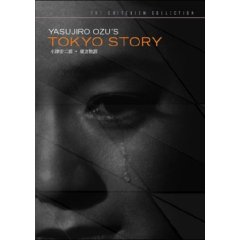Flippant Remarks about Akira Kurasawa and Yasujiro Ozu
 There is a relationship between Ran and Tokyo Story: both films deal with siblings throwing their parents out the house. They also criticize the degradation of the “morals” of the younger generation. To me, this state of affairs is a by-product of any imperial society.
There is a relationship between Ran and Tokyo Story: both films deal with siblings throwing their parents out the house. They also criticize the degradation of the “morals” of the younger generation. To me, this state of affairs is a by-product of any imperial society.- Yasujiro Ozu is famous for his tatami-mat compositions. To me this is just a cultural necessity: the characters need to sit on the floor because it’s a Japanese thang. Also whether one character is wearing ‘socks’ (tabi) or not also has Japanese meaning.
- Kurasawa uses long, telephoto compositions making “flat” images. This was probably deeply disrespected by white-supreme aesthetes until they died out and the George Lucas fan club took over… The main offense would be ignoring the achievements of the European Renaissance—namely their discovery of false perspective. Making 2D images is a Japanese thang. This is also an African thang—because symbolism has priority over duplicating nature. Making the audience “forget” they are watching a film can be done without trying to simulate nature.
- Kurasawa is fond of a two-shot where it is said that in the West a one-shot will do. However, Ozu uses a boat-load of one shots—but his are at 180-degree angles—no over-the-shoulder shit.
- Ozu will do a two shot with two characters sitting side by side. This immediately reminds me of what is called African “sculpture”—a male and female figure sitting beside each other.
- Kurasawa used multiple cameras set at a distance from the actors. The narrow cone of vision of his wide lenses helped this system. This also provided a theatrical feel for the actors who were unable to play to one camera—so the entire set becomes a stage.
